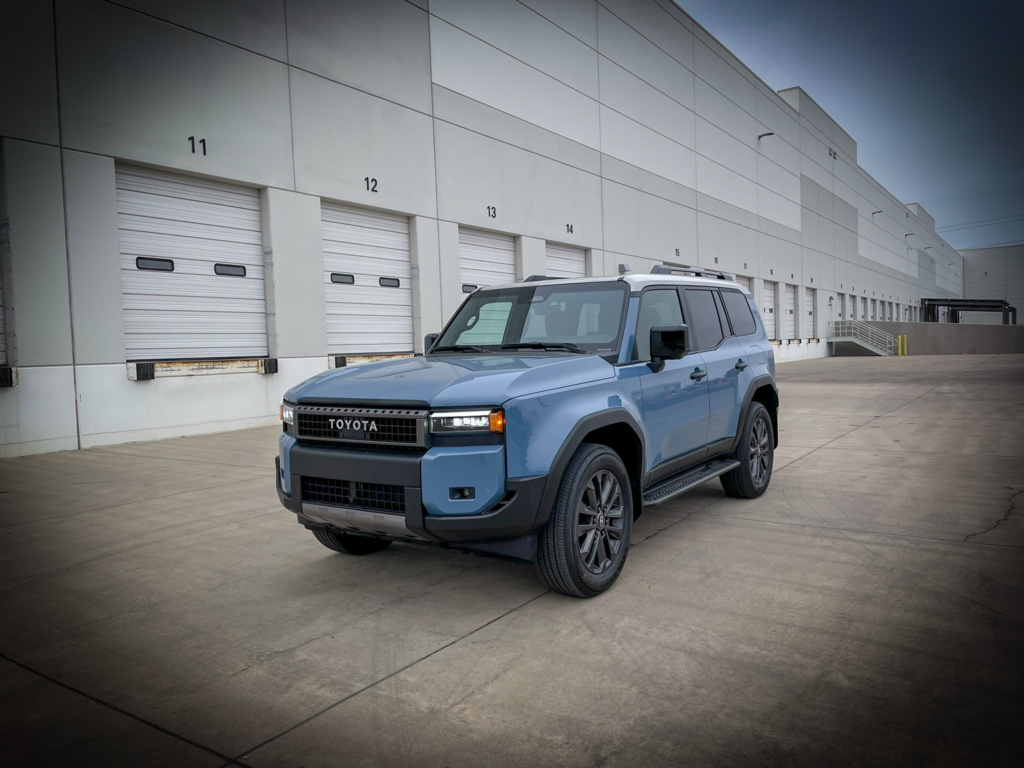
Toyota hits the reset button on the US-market Land Cruiser, after having dropped it from the lineup in 2021. Decades of more and more luxury had priced the Cruiser too far from anything else on the Toyota lot and, critically, too deep into Lexus territory. This new Land Cruiser marks a significant shift, where some could rightfully say, is a return to its senses.
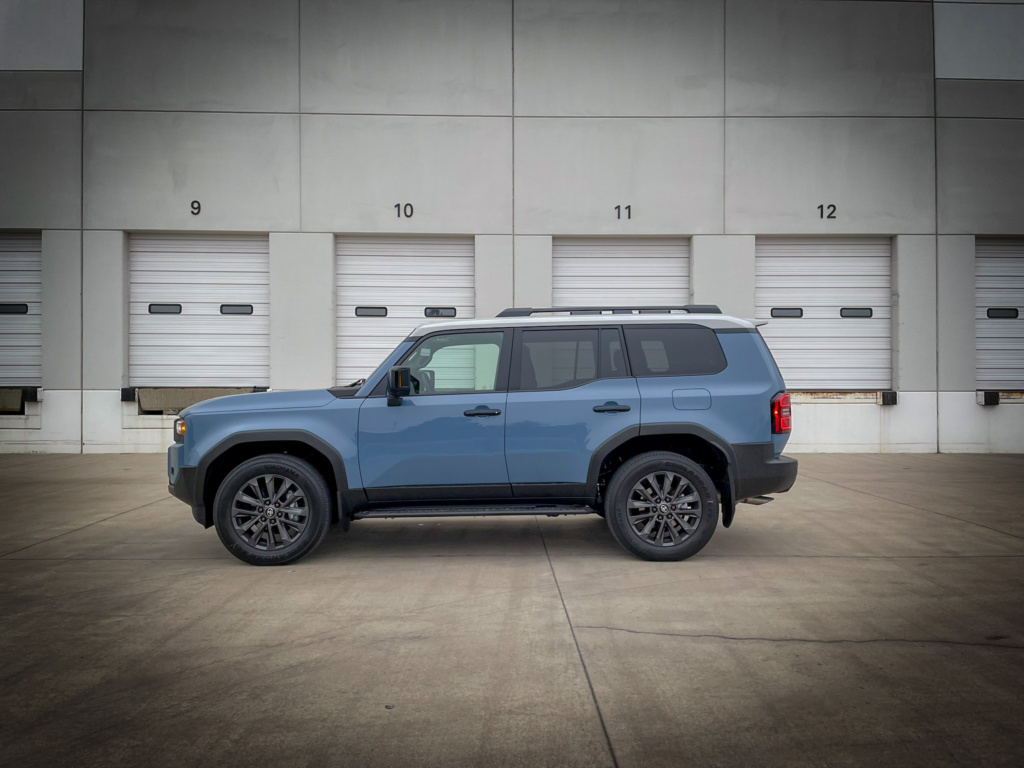
The design of this new “250-Series” Land Cruiser reveals a concerted effort to break free from the large and imposing design that spanned the last several decades. In fact, Toyota reached back to the 80s for this generation’s design inspiration. That is when the “60-Series” (a darling of Cruiser fanboys) roamed the earth. Its timeless “three-box” shape is filled with cleverly worked panels that deliver visual intrigue without looking cluttered. Small details such as the front cubed and rear piped LED lighting bring the necessary modernity to its design while also paying tribute.
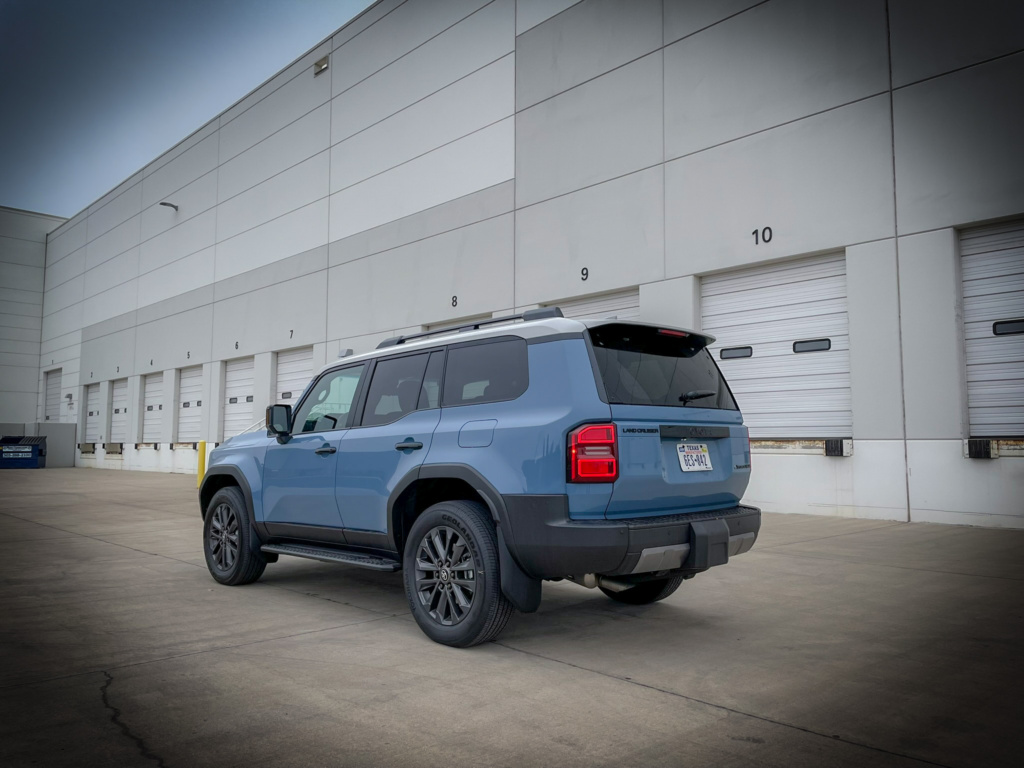
The new body is not as large as the recently departed model; more than four inches narrower and almost two inches shorter, but the cabin delivers an open space with plenty of room for four and a cargo area that is plenty large for a weekend camping trip. But, this generation is, of course, not without some engineering shortcomings such as a large rear center floor hump and a raised rear cargo floor, necessary to fit the hybrid system’s battery pack.
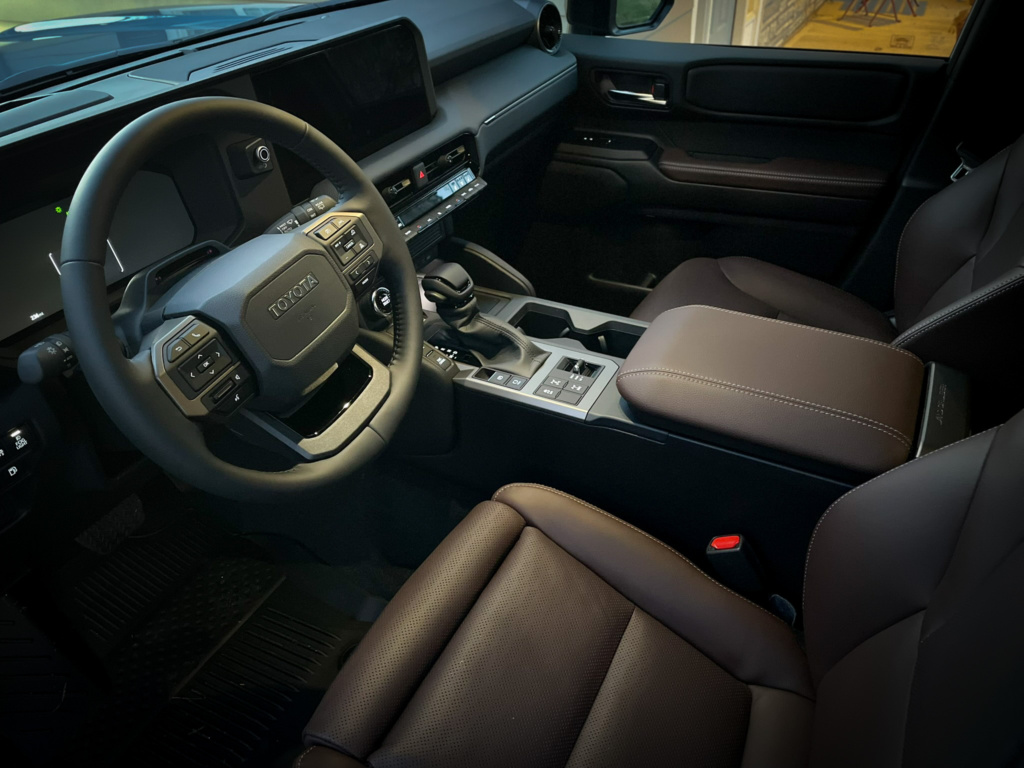
The new generation isn’t nearly as expensive as the outgoing model, yet it still lands as one of Toyota’s premium SUV choices. This particular Land Cruiser example, a fully loaded 2025 model, checks out around $68,000. And while that is a lot of money, the new Land Cruiser still provides a strong sense of value. Its extensive list of creature comforts, deeply padded touch surfaces, and plenty of high-quality physical controls are easy to appreciate every day. Even the large assembled components, such as the center console, have a solid and lasting feel.
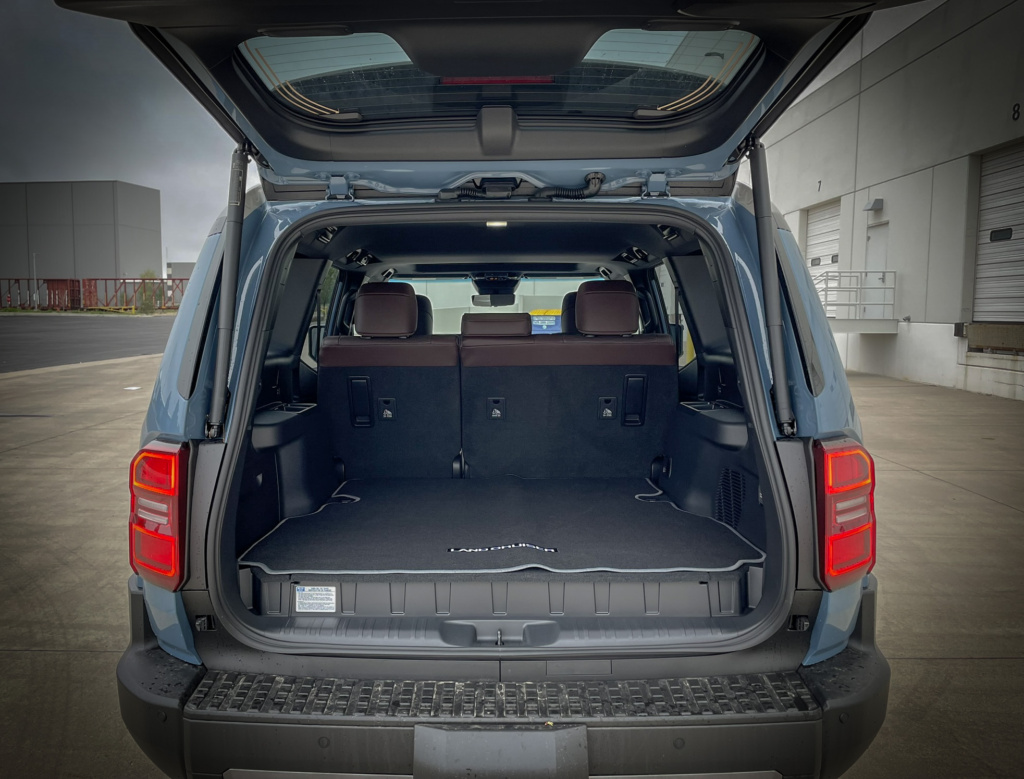
Outward visibility is also excellent – another Cruiser trait – with upright pillars and small-radius window openings. To add to the low-speed confidence, the surround-view camera offers a number of viewing angles in crisp definition, including its “see-through” trail view.

So what was lost in the down-market shift? Well, wind noise is notable at 70 mph, and the engine’s four-pot sound enters the cabin to a degree that can be tiresome if worked hard around town, although there are certainly some who may consider that another personality trait.

Looking beyond its shapes and features, the Land Cruiser’s drivetrain and chassis remain committed to its hard-working legacy. Its rugged body-on-frame construction provides the foundation for longevity, and a permanent four-wheel drive system (with low-range) is able to seamlessly put the power down to the tarmac. And to best dial in the traction control systems, there are a number of terrain-specific modes and even a low-speed crawl control that allows for more controlled progress. Every Land Cruiser is also fitted with locking center and rear differentials, and a disconnecting front sway bar is offered for better tire-to-ground contact. Speaking of contact, there are thankfully a number of underbody plates for when its relatively modest 8.7 inches of ground clearance isn’t quite enough.
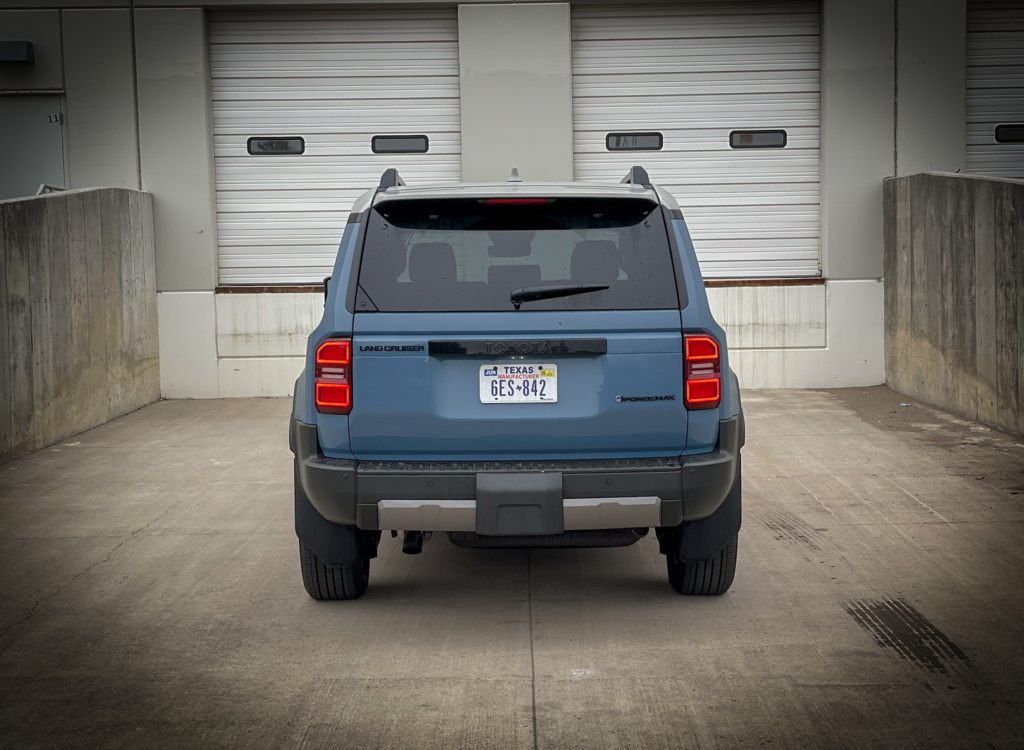
In what could be the most notable shift from its past is the Land Cruiser’s new effort toward some sense of fuel economy. Indeed, nearly anything would be better than the last generation’s pathetically low 14 MPG; however, the new Cruiser’s electric motor/ four-cylinder tag team, amounting to an EPA estimate of 23 MPG, is an outstanding feat (even if you don’t quite hit that mark).
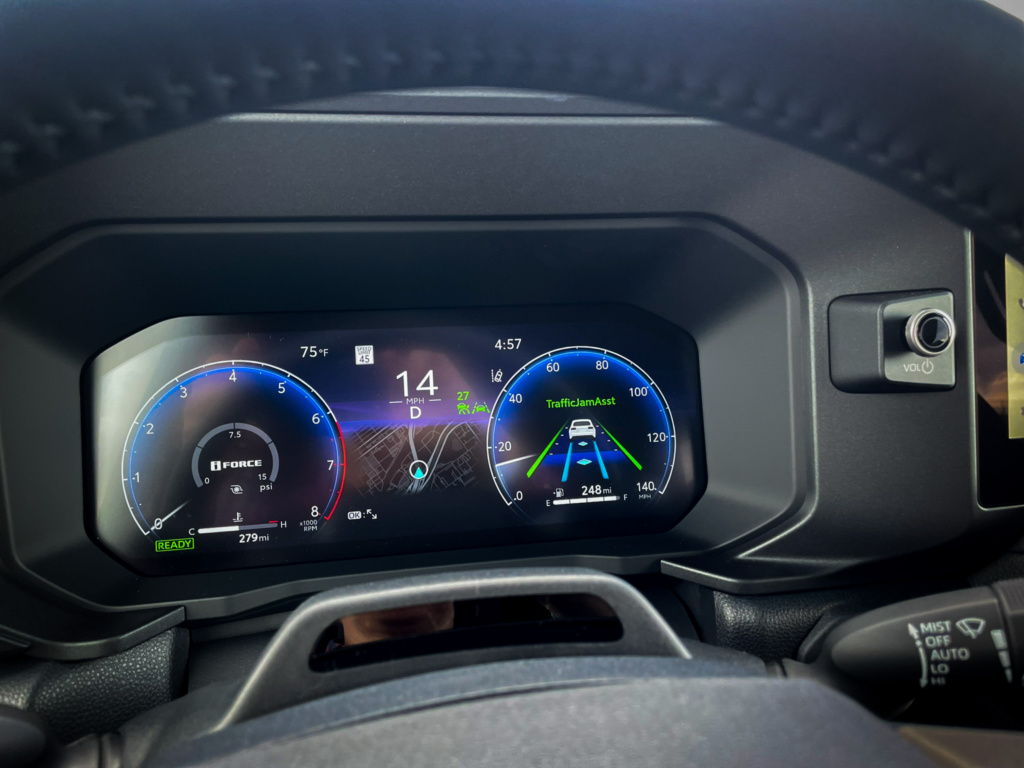
This Land Cruiser still speaks adventure as its most familiar language, yet there is enough comfort and efficiency for it to also speak daily-driver more easily than before. The electric motor and turbocharged four-cylinder engine shove the Land Cruiser forward and up to highway cruising speeds with low-RPM grace. In terms of power, however, its peak values of 326 HP and 465 lb-ft are downright eye-opening, and after driving it for a week (provided by Toyota at no expense to Pilgrim Motor Press), it never felt underpowered but, interestingly, it also never felt that powerful.
Long-distance high-speed cruising is where the Cruiser is happiest. Its coil-spring suspension impressively soaks up deep dips and removes the sharpness from impacts, while minimizing any additional motion from its body-on-frame and rear live-axle configuration. Putting the Land Cruiser into the twisties, or even an easy sweeping highway bend, results in significant body roll to the point where mid-corner bumps are projected more directly into the cabin.
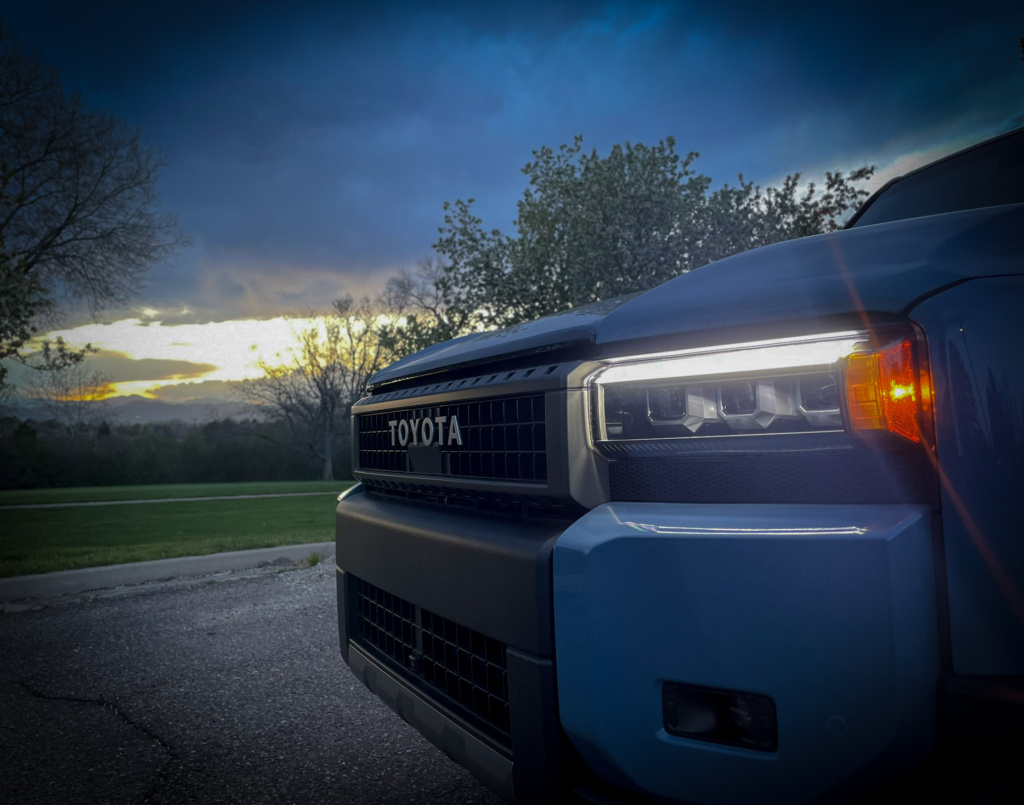
The Land Cruiser has created the separation from Lexus that it needed, yet it still delivers a premium experience while also creating a closer connection to its roots. Add in the modern necessities, including an excellent driving assist system, an infotainment system with a large display and all of the connectivity one could expect, as well as an advanced hybrid powertrain that delivers strong power and good fuel economy – it’s about time this hardy SUV finally joins us in the present time. Living the Land Cruiser lifestyle has never been easier.
